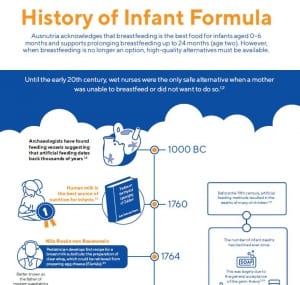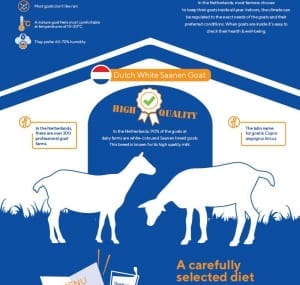
History of goat milk & infant nutrition
Goats were the first animals to be domesticated. Through the centuries the benefits of goat milk did not remain unnoticed. As scientific methodologies became more established research into the field confirmed many of the well believed benefits. Even back then, people knew that breastfeeding was the best source of nutrition for infants; however, when breastfeeding was not readily available, Konrad Zwierlien argued that goat milk would be the most agreeable wet nurse. Of course we know now that raw goat milk is not suitable for infants. Luckily, suitable goat milk formulas are nowadays commercially available, when breastfeeding is not or no longer an option.
4000 BC: First domesticated animals
Goats are one of the earliest domesticated animals in the world, even before cows. Farmers in areas of the Middle East and Western Asia started keeping goats for their milk and meat.

3000 BC: Vessels found of children fed goat milk
Archeologists found prehistorical baby bottles in German children’s graves. Via a narrow pout, the milk could be sucked up by infants. In these baby bottles, milk residuals were present that could be analysed. Scientists determined that prehistoric infants were fed with goat milk.
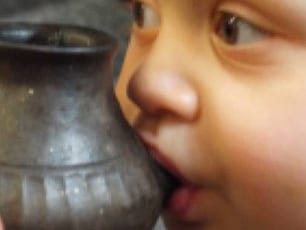
1000 BC: Baby Zeus drank milk from a goat
In Greek mythology we read that the baby Zeus drank milk from the teats of the goat nymph Amalthea.

1578: ‘Materia Medica’ describes beneficial properties of goat milk
First version of ‘Materia Medica’ available. It is the most complete and comprehensive medical book ever written in the history of traditional Chinese medicine. Materia Medica lists that goat milk has medicinal properties such as: anti-fatigue, beneficial for heart and lungs, positive effects on the gastrointestinal tract.

1816: Konrad Zwierlien: "a goat is the best and most agreeable wet-nurse"
Konrad Zwierlien wrote in his book “Die Ziege als beste und wohlfeilste Säugamme Stendal” that the goat is the best and most agreeable wet-nurse. More importantly, he also stated that goat milk can enhance infant nursing, but should not replace mother’s milk.

1873: Auguste Boudard described the physiology of wet-nursing with goats
Auguste Boudard wrote about the ‘Physiologie de la Chevre-Nourrice’. He described the Physiology of wet-nursing with goats: “A method of compensating for the harmfull effects of when mothers were often forced to abandon nursing, but the latter reanimed in all reapects the most desirable option.”
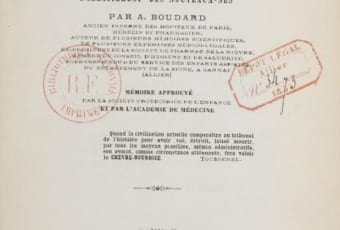
1906: Medical paper in Lancet published "Goat milk for infants"
Medical paper in Lancet published: “with some children, cow’s milk cannot be digested…..in such cases, preference should be given to a milk which contains a smaller proportion of casein than found in the milk of the cow, such as goats’ milk” (of course we know now that goat's milk does not contain a smaller portion of casein, but that the composition of those caseins differs from cow's milk)
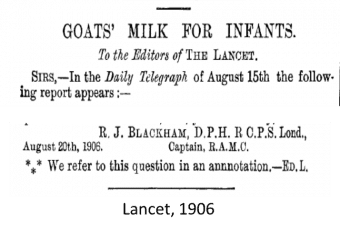
1972: Codex Alimentarius published
The first guidelines for the development of infant formula were stated in the Codex Alimentarius Standard For Infant Formulas. Infant formulas became commercially available.
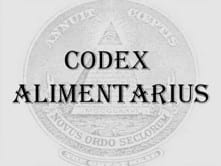
2006: Handbook of milk of non-bovine mammals
Dairy and nutrition experts from around the world contribute to the Handbook of Milk of Non-Bovine Mammals. The book covers important aspects of goat milk: nutritional, allergenic, immunological, and cultural factors.
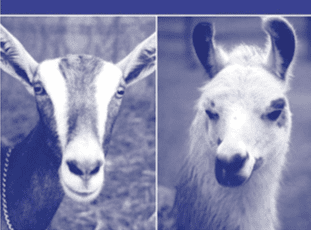
2011: Launch first Kabrita goat milk formula
Launch Kabrita goat milk formula in China & Rusland. First goat milk infant formula in China with an adapted whey:casein ratio resembling the ratio of human milk.
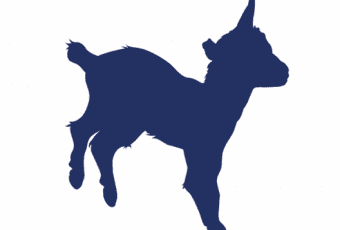
2013: Goat milk proteins as a source for infant formula
Goat milk formula was legally allowed in all European countries based on the EFSA approval. Clinical studies showed comparable growth in infants using goat milk formula compared to cow’s milk formula. In many other countries, goat milk formula was already allowed.

2016: Generally Recognized As Safe status to Ausnutria's goat milk ingredients
Authorities acknowledge goat milk proteins as a suitable source for infant formula. FDA GRAS status “Generally Recognized As Safe” to: Goat whey protein concentrate, and non-fat dry goat milk produced by Ausnutria B.V.

: Nowadays...
Goat milk is extensively researched for its health benefits in infants. Goat milk based infant formula is commercially available around the world. Goat milk formula is proven to be safe and well-tolerated for infants.

Documents in this publication

